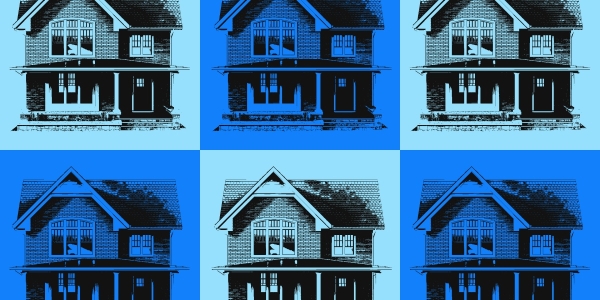
Brutal. That’s the best way to describe KB Home’s fourth quarter, which saw its buyer cancellation rate spike to 68%. That figure dwarfed the publicly traded homebuilders’ 13% cancellation rate from the previous year’s period. It also surpassed the industry’s peak cancellation rate of 47% during the darkest days of the 2008-era crash.
“Depending on market dynamics and backlog levels in each community, we are getting more aggressive with our pricing ahead of the spring selling season, in order to generate new orders,” KB Home told investors back in January after posting its disappointing fourth quarter result.
Fast-forward to February, and it looks like we’re already watching the housing market correction—which saw new and existing home sales contract at near record speed in the second half of last year—move into a new phase. What’s going on? Aggressive builder price cuts coupled with incentives, like mortgage rate buydowns, are helping builders get sales moving up again.
This uptick in new home sales could mean the home price correction on the new construction side is losing steam. Or at least losing steam for now.
“Builders have taken their medicine for the most part right now on pricing. And we think nationally, home prices—on the new home side, net of incentives—are down about 10% from peak,” Rick Palacios Jr., head of research at John Burns Real Estate Consulting, said in a video posted on Saturday. “There’s probably not a ton of runway there left.”
Let’s be clear: Palacios is talking about the home price correction on the new home side. On the existing or “resale” side, he thinks the home price correction has a way yet to go.
“We still think that there’s more [home] price correction to come on the resale side, though. And the resale market is always sticker to the downside when it comes to [home] prices,” Palacios says.
Unlike homebuilders, who need to cut prices in order to move unsold inventory, existing homeowners are usually more resistant to such cuts. That resistance is why existing home prices usually bottom out last in a housing market downturn.
Let’s take a closer look at the ongoing correction on the existing side. Here’s the data.
For 124 consecutive months, spanning the bottom of the previous housing bust in February 2012 through the top of the Pandemic Housing Boom in June 2022, the price of U.S. existing single-family homes, as measured by the seasonally adjusted Case-Shiller National Home Price Index, posted positive month-over-month home price growth.
That streak is over now.
Through the latest reading in November 2022, existing single-family home prices are down 2.5% from that June 2022 all-time high. On the one hand, that drop marks the second biggest home price correction of the post-World War II era. On the other hand, it’s a mild correction compared to the 26% peak-to-trough home price decline between 2007 and 2012.
It will be another six weeks until the Case-Shiller reading for January is released. However, preliminary data shows that the home price correction on the existing home side might also be losing some steam in 2023.
An analysis of Zillow Home Value Index data by Fortune (see chart above), finds that 79% of the nation’s 200 largest housing markets saw a month-over-month home price decline in September. That figure has since been dropping, slowly but surely.
In October, 76% of those major markets saw a home price decline. In November and December, it was down to 64% and 67%, respectively. However, in January, just 47% of the nation’s 200 largest housing markets registered a month-over-month home price decline.
Last year’s mortgage rate shock, which saw the average 30-year fixed mortgage rate spike from 3% to over 6%, has indeed set off a home price correction. That said, the correction continues to be bifurcated: Some markets are seeing a sharp correction, while other markets haven’t seen much of anything.
“If you’re anywhere in Texas or west of Texas, you’re probably down more… if you’re anywhere East of Texas, you’re probably not down that much, if at all,” Palacios says.
That bifurcated housing correction is why KB Home, which has a high concentration of business in fast-correcting West Coast and Mountain West markets, saw a cancellation rate that exceeded its peers, which do more business in the Midwest and Northeast.
When it comes to the home price correction, there does remain one big wildcard: Mortgage rates.
“Earlier price cuts that now combined with substantial rate buy downs are helping on the new home price stability side (in some markets). If [mortgage] rates stick around ~7% or break above, deeper [new and existing] price cuts may be required,” Palacios told Fortune.
Want to stay updated on the housing market correction? Follow me on Twitter at @NewsLambert.